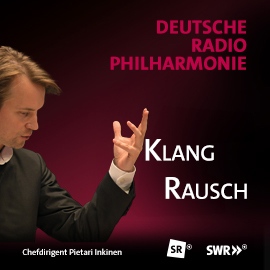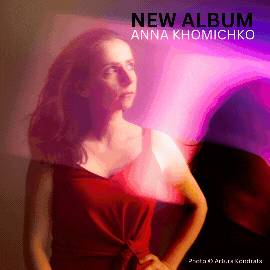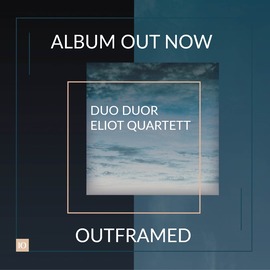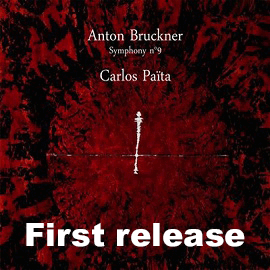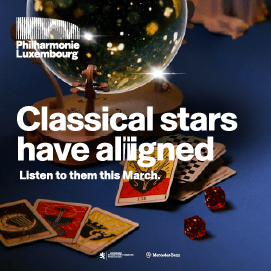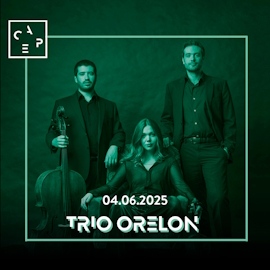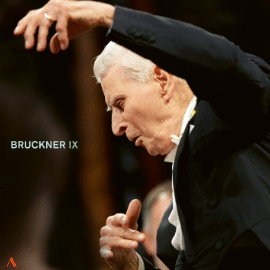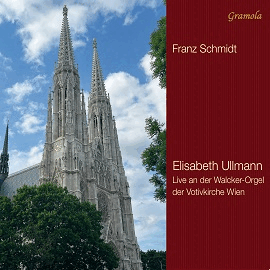Das Tripelkonzert von Sofia Gubaidulina, ein Auftragswerk auch des hier mitwirkenden Orchesters, setzt neben Violine und Cello das Bajan ein, ein in Russland zuvor nur in der Volksmusik eingesetztes Knopfakkordeon. Musikalisch ließ Gubaidulina sich wieder einmal, wie zuvor beim Violinkonzert ‘In tempus praesens’, vor allem vom Wechselspiel der Intervalle und deren Beziehungen zueinander leiten. Sie erforscht die Anziehungskraft der Intervalle, die Kraft ihrer Abstoßung und die Kraft, die diesen Kontrast erzeugt.
Auf Worte des ukrainischen ‘Wanderphilosophen’ Grigori Skoworoda schuf Gubaidulina bereits 1981 die fünf Sätze ihres Werks Rejoice!, welche die auf Gott bezogene Freude zum Inhalt haben. Als Metapher schildert sie den Übergang in eine andere Welt, indem sie Töne normal oder als Flageoletts spielen lässt. Dadurch erreicht sie die Verklärung des Ausdrucks.
Mit Baiba Skride und Harriet Krijgh interpretieren zwei sensible Künstlerinnen in beiden Werken, die mit ihrem feinsinnigen Spiel für die immer religiös grundierten Werke einen profunden Ansatz formulieren, dem sich die exquisite Bayanspielerin Elsbeth Moser für das Konzert ohne Kompromisse anschließen kann. Zusammen entwickeln sie im Tripelkonzert, dem das entsprechende Werk von Beethoven von Ferne als Anreiz diente, sowohl in mehreren gemeinsamen Kadenzen sowie auch einzeln oder zusammen im Zusammenspiel mit dem Orchester eine spannungsreiche Textur. Steht das Bayan hier an Stelle des Klaviers bei Beethoven, so nimmt es doch auch eigene Wege, wie die Clustereinwürfe zu Beginn und im Verlauf.
So gestalten sie im Trio eine hingebungsvolle Lesart des Konzerts bzw. als Duo der Sonate. Die NDR Radiophilharmonie bietet mit Andrew Manze als Dirigent eine die Solistinnen ergänzende Stimme, etwa wenn sie das Seufzermotiv der Solisten aufgreifen, wenn auch melodisch und rhythmisch variiert, und zusammen mit den Soloinstrumenten durchführen. Doch trägt das Orchester auch mit eigenen wichtigen Kommentierungen zum Fortschreiten und der Entwicklung der Musik bei. Diese Aufgabe nimmt es gewissenhaft wahr.
The Triple Concerto, a work also commissioned by the orchestra performing here, uses the bayan, a button accordion previously only used in folk music in Russia, alongside the violin and cello. Musically, Gubaidulina was once again, as previously in the violin concerto ‘In tempus praesens’, primarily guided by the interplay of intervals and their relationships to one another. She explores the attraction of intervals, the power of their repulsion and the force that creates this contrast.
In 1981, Gubaidulina created the five movements of her work Rejoice! based on words by the Ukrainian ‘wandering philosopher’ Grigori Skoworoda. As a metaphor, she depicts the transition to another world by having notes played normally or as harmonics. In this way, she achieves the transfiguration of expression.
Baiba Skride and Harriet Krijgh are two sensitive artists who, with their subtle playing, formulate a profound approach to the always religiously based works, which the exquisite Bayan player Elsbeth Moser can join without compromise for the concerto. Together they develop an exciting texture in the Triple Concerto, which was inspired by the corresponding work by Beethoven from afar, both in several joint cadenzas as well as individually or together with the orchestra. While the bayan takes the place of Beethoven’s piano here, it also takes its own paths, such as the cluster interjections at the beginning and in the course.
As a trio, they create a devoted reading of the concerto, and, as a duo, of the sonata. With Andrew Manze as conductor, the NDR Radiophilharmonie offers a voice that complements the soloists, for example when they take up the soloists’ sighing motif, albeit with melodic and rhythmic variations, and perform it together with the solo instruments. However, the orchestra also contributes to the progression and development of the music with its own important commentaries. It performs this task conscientiously



